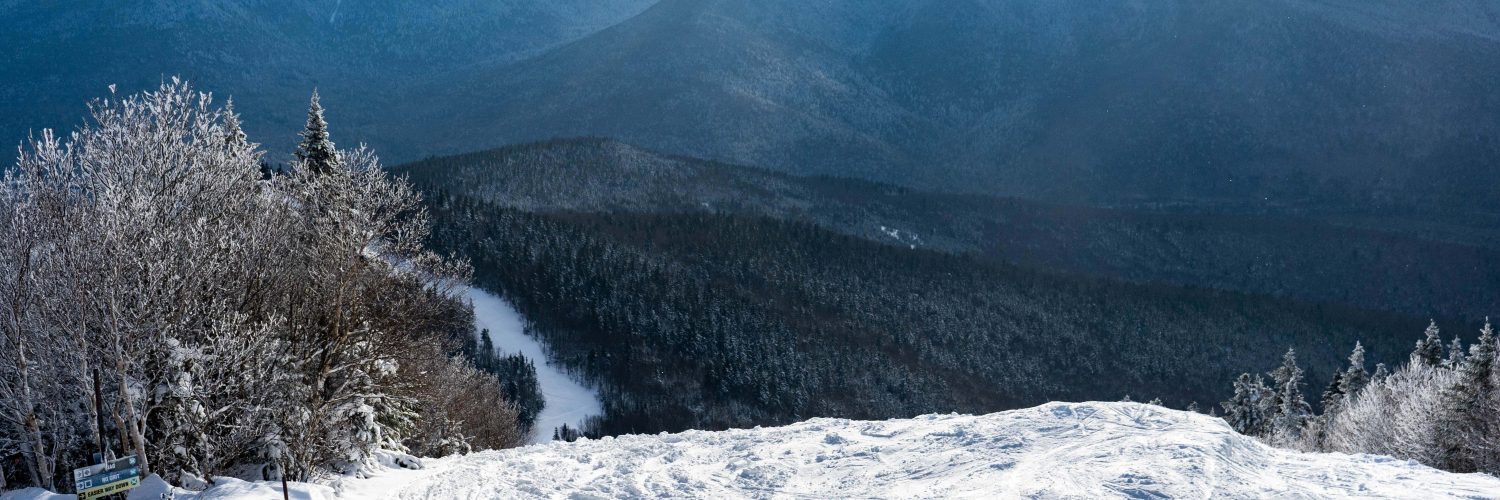
Carve With Confidence: Strength and Conditioning for Ski Season
Winter is coming, and the ski slopes are calling! There are few better feelings than carving down the slopes on your first run of the season, but skiing is also one of the most physically demanding sports out there. Without proper preparation, skiers often face sore legs, early fatigue, or even injury that can cut the season short.
Thankfully, we can prepare ourselves for the ski season ahead. With the right training, you can build the endurance and stability needed to ski harder, longer, and safer all winter.
Why Strength & Conditioning Matters for Skiers
Skiing demands powerful legs, a stable core, and the ability to control your body through constant changes in terrain. Preseason strength training helps you:
Build resilience: Strong muscles protect your joints and absorb impact.
Improve balance and agility: Essential for navigating uneven terrain and quick turns.
Delay fatigue: Better endurance means you can stay sharp on your last run, not just your first.
Prevent injuries: Conditioning your body for the specific stresses of skiing makes you less vulnerable to common knee, hip, and back issues.
These factors lead to skiing longer, stronger, and having fun, run after run.
Key Training Focus Areas for Ski Performance
Not all workouts are created equal when it comes to ski prep. When it comes to training to perform well in a specific activity such as skiing, exercises need to be chosen to meet the specific demands of the movements performed during that activity. The following are some of the most effective methods to build ski-specific strength and stability.
The complete list of exercises with pictures are at the bottom of the page.
1. Single-Leg Exercises for Balance & Stability
Skiing rarely puts equal weight on both legs. Turns require control and power from one side at a time. Training with single-leg movements improves balance, coordination, and strength in a way that mirrors skiing.
Examples: Bulgarian split squats, single-leg deadlifts, step-downs, or skater lunges.
Benefits: Improved edge control, knee stability, and reduced risk of falls.
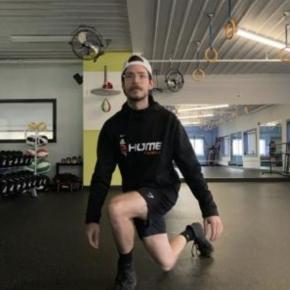
Skater Lunge
2. Hip Activation
Strong, stable hips are the foundation of powerful turns and efficient movement patterns. Many skiers struggle with weak or underactive glutes, which can lead to fatigue and knee strain. Band work is a simple, effective way to strengthen the muscles around the hips.
Examples: Banded lateral walks, clamshells, and hip thrusts with bands.
Benefits: Stronger carving power and reduced strain on knees and lower back.
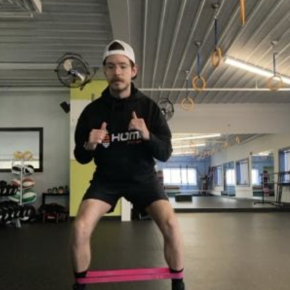
Banded Lateral Steps
3. Slow Eccentric Training for Ski Endurance
Skiing places huge eccentric demands on your legs. These demands occur during the controlled lowering and absorbing forces as you carve, decelerate, and absorb terrain. Training this way in the gym prepares your body for exactly what skiing requires.
Examples: Slow lowering in squats, Romanian deadlifts with a 3–5 second eccentric phase, or eccentric step-downs.
Benefits: Greater strength endurance, better control in turns, and less soreness after long ski days.
Building Ski-Specific Power at Any Age
Strength lays the foundation, but power (the ability to apply force quickly) is what allows skiers to explode into turns, stay light on their edges, and react quickly to changing terrain. And the best part? With proper programming, anyone can build power, regardless of age or ability.
The key is choosing the right exercise variation for your current fitness level and gradually increasing difficulty.
- For beginners: Controlled, low-impact movements.
Examples: Sit-to-stands with speed, medicine ball slams, step-ups with a quick drive.
- For intermediate skiers: More dynamic movement with safe landings.
Examples: Box jumps, lateral bounds with stick (hold the landing), kettlebell swings.
- For advanced skiers: Plyometrics and loaded power movements.
Examples: weighted jump squats, lateral skater jumps, Olympic lift variations (cleans, snatches).
Why this works: By tailoring the movement to your ability, you can train explosiveness safely. Power training not only improves performance on the slopes but also sharpens reaction time, enhances agility, and keeps skiing accessible and fun at any age.
Putting It All Together
A smart ski conditioning program should combine:
Lower-body strength (squats, deadlifts, lunges)
Single-leg stability (RFE split squat, step-downs, SL RDL)
Hip activation drills (bands, Hip CARS, birddog extensions)
Eccentric training (slow, controlled lowering movements)
Power progressions (from beginner sit-to-stands to advanced plyometrics)
Core stability (anti-rotation, planks, carries)
Lower Body Strength
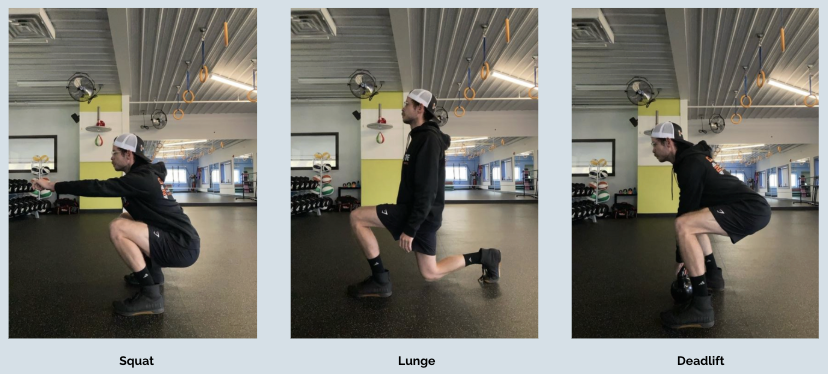
Single Leg Stability
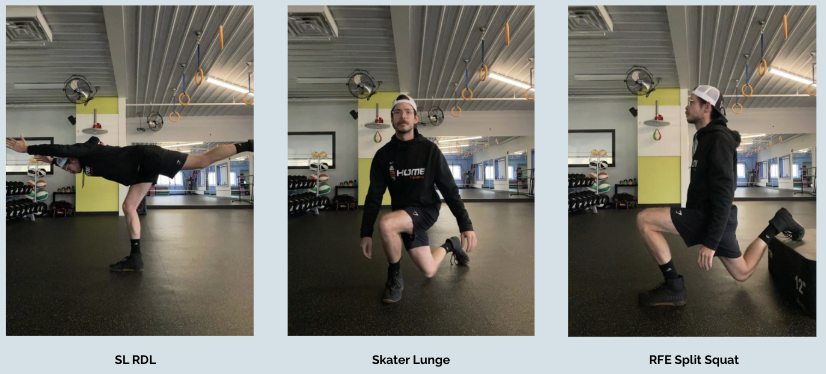
Core/Hip
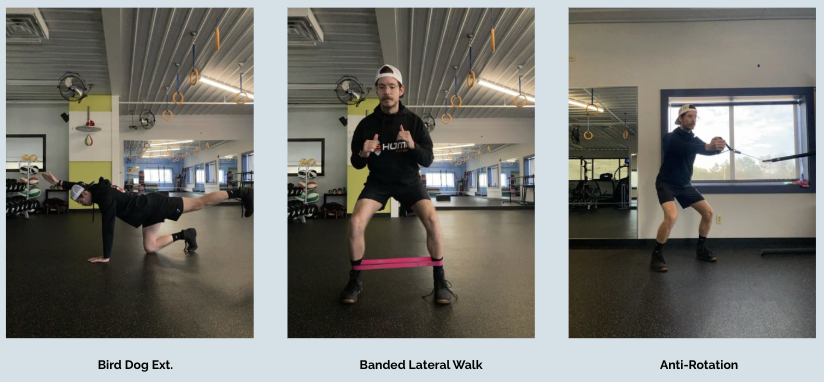
Train Now, Ski Better Later
The lifts will be spinning soon, get yourself ready today! By focusing your preseason training on ski-specific strength, conditioning, and power, you’ll carve with confidence, ski longer without fatigue, and drastically reduce your risk of injury.
Start now, and when the season starts, you’ll be confident and prepared to dominate the slopes!
Ready to Put This Into Action?
I’m Timothy Finch, the Director of Strength and Conditioning at 2 Home Fitness, former strength and conditioning coach to Colby-Sawyer College Alpine Ski Team, and lifelong skier. My goal is simple: to help you take the guesswork out of ski preparation and train in a way that directly translates to performance on the slopes.
If you’re ready to take these concepts from the page to the gym, join me in 6-week ski strength and conditioning sessions focused on building power, strength, mobility, and endurance for skiers of all abilities. Email tfinch@2homefit.com or visit www.2homefitness.com for more information.
Come train and set yourself up for your best ski season yet.



